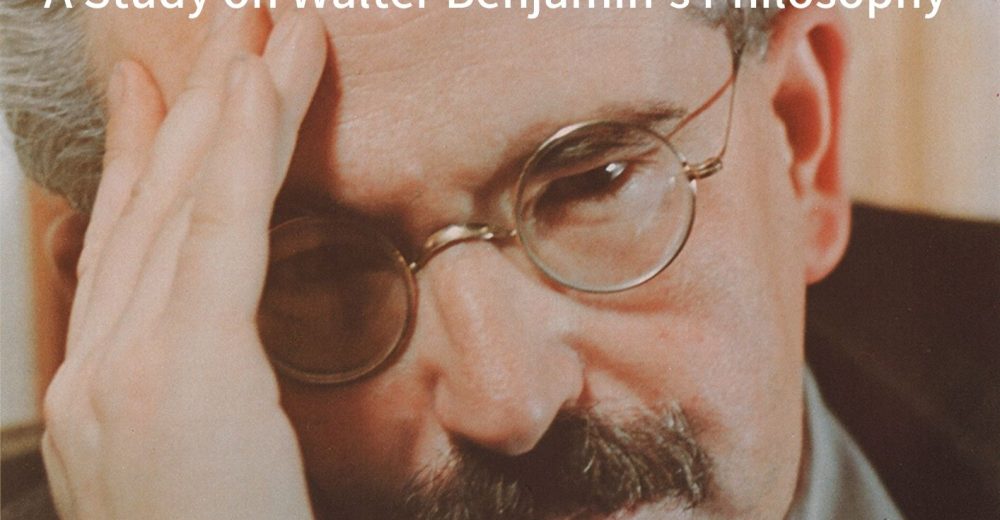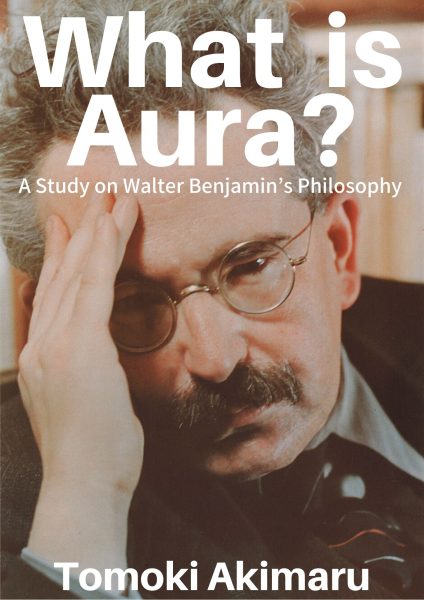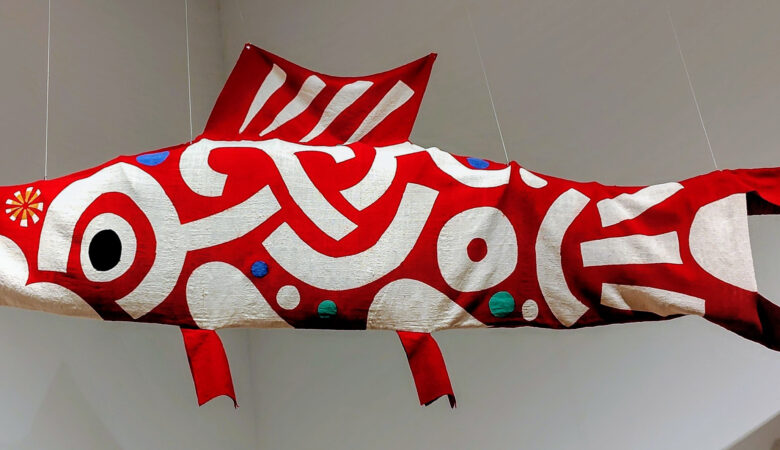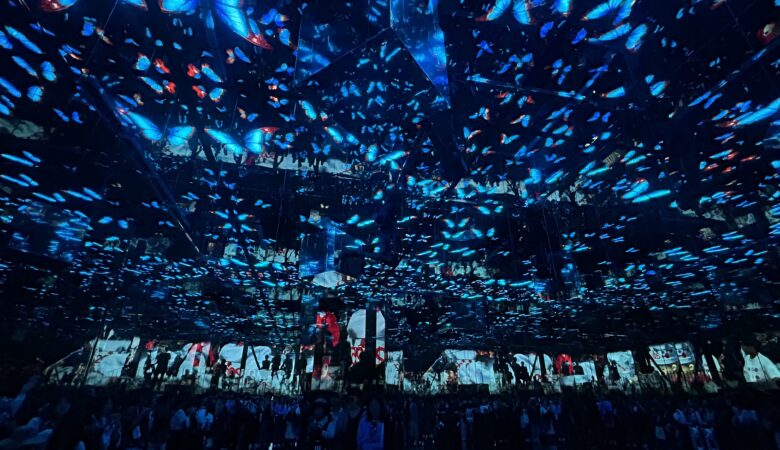1 Aura and Time
What is Walter Benjamin’s concept of ‘Aura’?
In ‘Little History of Photography’ (1931), Benjamin describes the notion of aura in the following paragraph:
What is aura, actually? A strange weave of space and time: the unique appearance or resemblance of distance, no matter how close it may be. While at rest on a summer’s noon, to trace a range of mountains on the horizon, or a branch that throws its shadow on the observer, until the moment or the hour become part of their appearance—this is what it means to breathe the aura of those mountains, that branch.[1]
In ‘The Work of Art in the Age of Its Technological Reproducibility’ (1935-36), Benjamin repeats the notion of aura, which is as follows:
What, then, is the aura? A strange tissue of space and time: the unique apparition of a distance, however near it may be. To follow with the eye—while resting on a summer afternoon—a mountain range on the horizon or a branch that casts its shadow on the beholder is to breathe the aura of those mountains, of that branch.[2]
According to the above descriptions, ‘aura’ is ‘the unique appearance of a distance’ related to ‘space’ and ‘time.’ In the scenario cited by Benjamin, ‘aura’ can be interpreted as a ‘distance’ in terms of ‘time’ rather than of ‘space,’ for it appears ‘however near it may be,’ in Benjamin’s own words.
I would like to analyze this concept step by step. Firstly, this ‘strange weave of space and time,’ or ‘the unique appearance of a distance’ called ‘aura’ can be understood as the ‘time’ that an object has been accumulating in the ‘space’ since the beginning of the world. Precisely speaking, the term ‘object’ here includes both subjects and objects.
Secondly, since ‘to breathe the aura of a branch’ means ‘to follow with the eye the branch that throws its shadow on the observer,’ both the subject and the object must exist simultaneously when the subject ‘breathes the aura’ of the object, which means that the condition occurs on the premise that both the subject and the object are present in the same space and at the same time. In addition, if ‘to breathe the aura’ of an object means ‘to follow with the eye until the moment or the hour becomes part of their appearance,’ one can assume that in order for a subject to ‘breathe the aura’ of an object, it is imperative for the subject to perceive the object in the same ‘space’ on the extension of ‘time’ that the subject has been accumulating, and with the accumulated ‘time’ that the object itself carries.
Lastly, as the act of following with the eye is carried out while someone is ‘resting on a summer afternoon,’ one may assume the subject’s attention on the object to be static and sustained.
2 Aura and Interaction
What exactly are the constituents of ‘aura’ as accumulated ‘time’? Benjamin makes mention of this in ‘On Some Motifs in Baudelaire’ (1939), which is as follows: “Experience of the aura thus arises from the fact that a response characteristic of human relationships is transposed to the relationship between humans and inanimate or natural objects.[3]” In ‘Central Park’ (1939), Benjamin refers to ‘aura’ in the following sentence: “Derivation of the aura as the projection of a human social experience onto nature: the gaze is returned.[4]”
After studying these descriptions, it becomes apparent that the conceptual basis of the ‘experience of the aura’ is the ‘response characteristic’ in the relationships between humans, and it is also applicable to the relationships between humans and inanimate objects. Moreover, one can presume that the ‘response characteristic’ is related to ‘the gaze,’ which is the act of seeing.
In ‘On Some Motifs in Baudelaire,’ Benjamin mentions ‘aura’ in regard to the act of seeing: “The person we look at, or who feels he is being looked at, looks at us in turn. To experience the aura of an object one looks at means to invest it with the ability to look back at us.[5]” Also mentioned in the same writing is that “inherent in the gaze, however, is the expectation that it will be returned by that on which it is bestowed. Where this expectation is met (which, in the case of thought processes, can apply equally to an intentional gaze of awareness and to a glance pure and simple), there is an experience [Erfahrung] of the aura in all its fullness.[6]”
What one can derive from these depictions is that for Benjamin, ‘the gaze’ denotes exact, intentional attention within the consciousness. As for vision, ‘the gaze’ does not merely mean seeing an object that comes into one’s view, but also concentrating to see it. In other words, it is the focusing, the observation, and the contemplation.
According to Benjamin, a subject can fully experience the aura of an object if the object, while being gazed at by the subject, gazes back at the subject. If the object becomes the gazer and the subject becomes the gazed, the subject is expected to gaze back at the object too. This is a mutual reaction, which, in other words, is an interaction between the subject and the object existing in the same space-time. A depiction by Benjamin himself regarding this interaction between the subject and the object can be found in ‘Fate and Character’ (1919): “Between the active man and the external world, all is interaction; their spheres of action interpenetrate.[7]”
‘Aura,’ therefore, is a change of object which occurs as a result of this interaction. Also, all traces of this change accumulated in ‘time’ can be understood as ‘aura.’ In this context, ‘aura’ represents all the unique changes that the object has been amassing since its origin. Therefore, an experience of the aura (or to breathe the aura) means that the subject and the object, each carrying overall traces of changes accumulated in ‘time,’ are interacting in the same space-time, while each change caused by their interaction is continuously renewed by each overall trace of change accumulated in ‘time.’ In ‘Hashish, Beginning of March 1930’ (1930), Benjamin writes that ‘First, genuine aura appears in all things, not just in certain kinds of things, as people imagine. Second, the aura undergoes changes, which can be quite fundamental, with every movement the aura-wreathed object makes. Third, genuine aura can in no sense be thought of as a spruced-up version of the magic rays beloved of spiritualists and described and illustrated in vulgar works of mysticism.[8]”
If one considers ‘the gaze’ as a kind of metaphor, interaction-generating aura is possible even with inanimate objects. Actually, in ‘On Some Motifs in Baudelaire,’ Benjamin proposes the notion of aura brought about by senses other than vision: “If we think of the associations which, at home in the mémoire involontaire, seek to cluster around an object of perception, and if we call those associations the aura of that object, then the aura attaching to the object of a perception corresponds precisely to the experience [Erfahrung] which, in the case of an object of use, inscribes itself as long practice.[9]”
If “the experience which, in the case of an object of use, inscribes itself as long practice” corresponds to “the aura attaching to the object of a perception”, it is quite inconceivable that the interaction which generates aura is confined solely to vision; all five senses, vision, touch, hearing, smell, and taste should be engaged for this interaction to take place. In ‘Main Features of My Second Impression of Hashish’ (1928), Benjamin notes that “Bloch wanted to touch my knee gently. I could feel the contact long before it actually reached me. I felt it as a highly repugnant wound to my aura.[10]”
What, then, is the essence of the change engendered by such interaction? First, in the case of animate objects, it is an emotion or a conscious reaction such as reciprocation while being looked at. Another possible case applicable to both animate and inanimate objects is the transformation of physical structure which happens to both the subject and the object when they come into contact with each other. For instance, if one touches with one’s bare hands paint which is not dry yet, the paint will be smeared, and one’s hands will get soiled. Finally, irrespective of whether the object is animate or otherwise, the update of the historical testimony of both subject and object when they exist in the same space-time can also be considered as a change. In ‘The Work of Art in the Age of Its Technological Reproducibility,’ Benjamin furnishes the following explanation: “The authenticity of a thing is the quintessence of all that is transmissible in it from its origin on, ranging from its physical duration to the historical testimony relating to it.[11]”
An object is defined as the object by the subject, and the subject is also defined as the subject by the object; the object appears in the time of the subject, the subject also appears in the time of the object; the object is positioned by the position of the subject, the subject is also positioned by the position of the object; the relationship with the object is recorded in the accumulated time of the subject, and the relationship with the subject is also recorded in the accumulated time of the object. In this sense, ‘to invest it with the ability to look back at us” means the relationship with the subject is added to the accumulated time of the object. The process in which the subject and the object take in each other in each accumulated time can be described as breathing.
According to Benjamin’s concept, an object constantly interacts with other objects existing in the same space-time. The change generated by such interaction builds up as time-based accumulation. If the subject is animate, the higher the level of its attention toward the object, and the denser its emotion toward the object. If both the subject and the object are animate, one may call the interaction real-time communication. As the result, the mental or physical changes experienced by the subject and the object enrich their auras.
3 A Decay of the Aura
Based on the concepts mentioned above, one might define ‘aura’ as change and all its traces on all interacting objects in the same space-time. In The Arcades Project, Benjamin notes, in respect of trace and aura: “The trace is appearance of a nearness, however far removed the thing that left it behind may be. The aura is appearance of a distance, however close the thing that calls it forth. In the trace, we gain possession of the thing; in the aura, it takes possession of us.[12]”
I wish to define the conscious perception when the subject experiences the aura of the object as aura-based perception. In ‘On Some Motifs in Baudelaire,’ Benjamin states that “‘Perceptibility,’ as Novalis puts it, ‘is an attentiveness.’ The perceptibility he has in mind is none other than that of the aura.[13]”
The generation of aura is natural, and aura-based perception is also natural for humans. The aura and aura-based perception have enriched mankind both physically and mentally. However, since the 19th century, the development of science and technology has interfered with subject-object relationships in various ways, including natural aura-based perception. There has been a marked decrease in interaction and hence aura. Moreover, the ability to perceive the aura weakens when the acuteness of the five senses is compromised or when the attention of the consciousness is diverted. Consequently, there has been a poverty in the experience of the aura,[14] which Benjamin describes as ‘a decay of the aura’[15].
For instance, on the subject of the railway, the regularity and monotony of steam-powered trains running on straight rails have rendered the relationship between the passenger and the scenery artificial and alienated. In such a situation, sight is the only sense being engaged, and conscious attention cannot function properly. Hence, the interaction between the passenger and the scenery weakens, and both aura and aura-based perception decline.
In another example, in the case of a photograph, the relationship between the viewer and the subject is severed and unilateral, and the image of the subject becomes superficial and dull. In such circumstances, vision is the only one of the five senses engaged, and continuous concentration is interrupted. Therefore, there is no interaction between the viewer and the subject, and both aura and aura-based perception decline.
Such deprivation of the experience of the aura is perceived as a ‘shock’[16] to those accustomed to aura-based perception. One may paraphrase the denaturalized perception as anti aura-based perception. In most cases, the older generations abhor such unnatural perception. Yet Benjamin insists that a new generation with its perception adapted to new realities begins to perceive it as attractive.
For example, in the case of the railway, passengers can travel to remote locations within short spaces of time. Similarly, regarding the photograph, the viewer can possess the image of the subject taken at a certain place and time and carry it anywhere he likes. In a film, which is the continuous projection of photographs, although only vision and hearing among the five senses are engaged, the viewer can enjoy moving images recorded in different spaces and times, complete with montages, closeups, slow motions, quick motions, etc. On the radio, although only hearing among the five senses is engaged, people can hear sounds from faraway places. On the telephone, people are connected despite the vast distances between them.
In the above cases, one can act beyond the natural constraints of space and time. In ‘The Work of Art in the Age of Its Technological Reproducibility,’ Benjamin summarizes this new mentality as follows: “The desire of the present-day masses to ‘get closer’ to things, and their equally passionate concern for overcoming each thing’s uniqueness by assimilating it as a reproduction.[17]”
Benjamin evaluates these new modes of perception and exalts their potential in human activity. His concept of ‘aura’ is certainly a useful instrument for analyzing the transformation of human perception in modern times.
[1] Walter Benjamin, ‘Little History of Photography’ (1931), in Selected Writings, Volume 2, Part 2: 1931-1934, translated by Rodney Livingstone and Others, edited by Michael W. Jennings, Howard Eiland, and Gary Smith, Cambridge, MA: The Belknap Press of Harvard University Press, 2005, pp. 518-519.
[2] Walter Benjamin, ‘The Work of Art in the Age of Its Technological Reproducibility [Second Version]’ (1935-36), in Selected Writings, Volume 3: 1935-1938, translated by Edmund Jephcott, Howard Eiland, and Others, edited by Howard Eiland and Michael W. Jennings, Cambridge, MA: The Belknap Press of Harvard University Press, 2006, pp. 104-105.
[3] Walter Benjamin, ‘On Some Motifs in Baudelaire’ (1939), in Selected Writings, Volume 4: 1938-1940, translated by Edmund Jephcott and Others, edited by Howard Eiland and Michael W. Jennings, Cambridge, MA: The Belknap Press of Harvard University Press, 2006, p. 338.
[4] Walter Benjamin, ‘Central Park’ (1939), in Selected Writings, Volume 4: 1938-1940, translated by Edmund Jephcott and Others, edited by Howard Eiland and Michael W. Jennings, Cambridge, MA: The Belknap Press of Harvard University Press, 2006, p. 173.
[5] Benjamin, ‘On Some Motifs in Baudelaire,’ p. 338.
[6] Ibid., p. 338.
[7] Walter Benjamin, ‘Fate and Character’ (1919), in Selected Writings, Volume 1: 1913-1926, edited by Marcus Bullock and Michael W. Jennings, Cambridge, MA: The Belknap Press of Harvard University Press, 2004, p. 202.
[8] Walter Benjamin, ‘Hashish, Beginning of March 1930’ (1930), in Selected Writings, Volume 2, Part 1: 1927-1930, translated by Rodney Livingstone and Others, edited by Michael W. Jennings, Howard Eiland, and Gary Smith, Cambridge, MA: The Belknap Press of Harvard University Press, 2005, pp. 327-328.
[9] Benjamin, ‘On Some Motifs in Baudelaire,’ p. 337.
[10] Walter Benjamin, ‘Main Features of My Second Impression of Hashish’(1928), in Selected Writings, Volume 2, Part 1: 1927-1930, translated by Rodney Livingstone and Others, edited by Michael W. Jennings, Howard Eiland, and Gary Smith, Cambridge, MA: The Belknap Press of Harvard University Press, 2005, p. 87.
[11] Benjamin, ‘The Work of Art in the Age of Its Technological Reproducibility,’ p. 103.
[12] Walter Benjamin, The Arcades Project, translated by Howard Eiland and Kevin McLaughlin, prepared on the basis of the German volume edited by Rolf Tiedemann, Cambridge, MA: The Belknap Press of Harvard University Press, 2002, p. 447.
[13] Benjamin, ‘On Some Motifs in Baudelaire,’ p. 338.
[14] Walter Benjamin, ‘Experience and Poverty’ in Selected Writings, Volume 2, Part 2: 1931-1934, translated by Rodney Livingstone and Others, edited by Michael W. Jennings, Howard Eiland, and Gary Smith, Cambridge, MA: The Belknap Press of Harvard University Press, 2005, pp. 731-736.
[15] Benjamin, ‘The Work of Art in the Age of Its Technological Reproducibility,’ p. 104.
[16] Benjamin, ‘On Some Motifs in Baudelaire,’ p. 318.
[17] Benjamin, ‘The Work of Art in the Age of Its Technological Reproducibility,’ p. 105.











